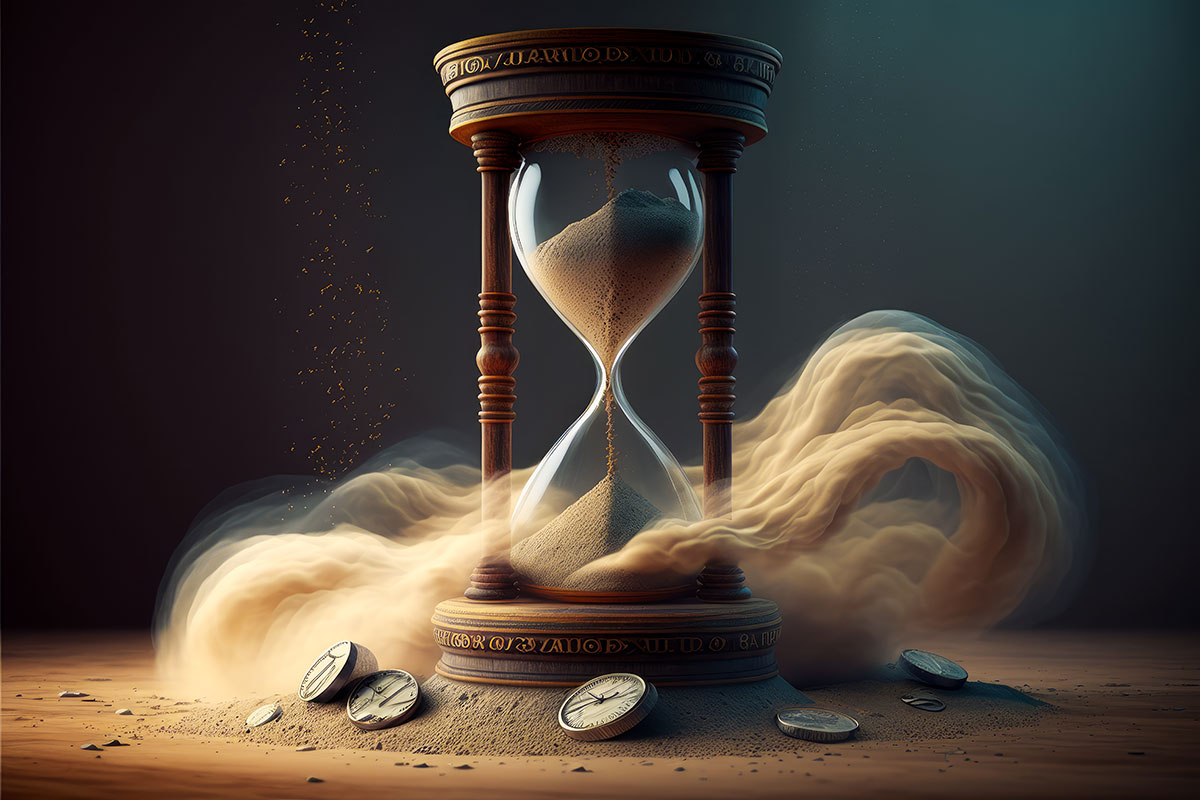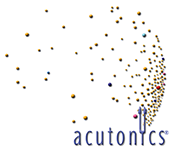Ellen F. Franklin, PhD & Donna Carey, LAc
Time, time, time. See what’s become of me, while I look around for my possibilities…
- from A Hazy Shade of Winter, Lyrics by Paul Simon
As solstice and the New Year approach, we enter a season when we feel drawn to reflect on possibilities and to manifest energy for all the tasks before us. Anxiety is heightened as we look outward at ongoing wars, environmental losses, and the daily challenges we bear witness to in our modern world. We feel the gravity of time, past experiences, present realities, and future potentialities.
Perhaps it is not chronological time (Kronos or Saturn’s time) that we need to explore but Kairos. Kairos is a very special interval in time, the right moment for action and decision. Viewed as a harmonious opportunity when there is alignment of circumstances, emotion, and action. It might be the exact instance, where we sense and deeply feel a beautifully aligned timeliness, a fluid opportunity where our words or actions resonate deeply with others. We may even experience this as luminous, the bright, steady glow that shines through darkness.
 Yet, during the holiday season, we are so often caught in the weight of chronological time (Saturn’s time), the hands of a clock, the ticking away of opportunities, the rush to get it all done. We are self-critical at not getting to everything on our list, and we forget the monumental importance of making time for our own healing journey. Our light dims as we fail to take time for self-care in a crazy and troubling world. Our language is overly focused on the need to catch up, stop time, find time, make more time, feel that life is ticking away. Even though it is rare these days to actually see an hourglass, or analog clock or to hear the ticking of time, it remains a powerful force.
Yet, during the holiday season, we are so often caught in the weight of chronological time (Saturn’s time), the hands of a clock, the ticking away of opportunities, the rush to get it all done. We are self-critical at not getting to everything on our list, and we forget the monumental importance of making time for our own healing journey. Our light dims as we fail to take time for self-care in a crazy and troubling world. Our language is overly focused on the need to catch up, stop time, find time, make more time, feel that life is ticking away. Even though it is rare these days to actually see an hourglass, or analog clock or to hear the ticking of time, it remains a powerful force.
 Throughout our travels in Europe in cathedrals, castles, and museums it was rare to see a working clock. Those that did work were no longer powered by the act of mechanical winding and the manipulation of an internal mainspring that slowly unwinds to create the movement in the hands around the dial. There was no oscillator, balance wheel or pendulum to allow the clock to advance at a steady pace. Rather, time keeping has advanced from springs, to quartz, requiring batteries to operate, and onward to digital and advanced mechanisms. Each of these changes represent more than advancements in technology but actual transitions in our perceptions of time.
Throughout our travels in Europe in cathedrals, castles, and museums it was rare to see a working clock. Those that did work were no longer powered by the act of mechanical winding and the manipulation of an internal mainspring that slowly unwinds to create the movement in the hands around the dial. There was no oscillator, balance wheel or pendulum to allow the clock to advance at a steady pace. Rather, time keeping has advanced from springs, to quartz, requiring batteries to operate, and onward to digital and advanced mechanisms. Each of these changes represent more than advancements in technology but actual transitions in our perceptions of time.
 The poet T.S. Eliot’s concept of time introduces two streams that exist simultaneously and intersect at crucial moments. Temporal time where life is lived in the ever-changing flux of the phenomenal world and the timeless noumenal world which we encounter during significant life altering moments of synchronicity or when we participate in Kairos (time). Eliot articulates, time-past and present enveloped by time-future. He invites us to hear the unheard music to find the still point of the turning world where there is only the dance.
The poet T.S. Eliot’s concept of time introduces two streams that exist simultaneously and intersect at crucial moments. Temporal time where life is lived in the ever-changing flux of the phenomenal world and the timeless noumenal world which we encounter during significant life altering moments of synchronicity or when we participate in Kairos (time). Eliot articulates, time-past and present enveloped by time-future. He invites us to hear the unheard music to find the still point of the turning world where there is only the dance.
As we navigate through troubled waters, we have an opportunity to build a different relationship with time, we can be time-ridden and struggle to push through challenges we face, or we can embrace Kairos and recognize those magical moments between time and the timeless that create the perfect moment for harmonious actions, the creative boundary of the Tao between Yang (Kronos) and Yin (Kairos).
Time present and time past
Are both perhaps present in time future,
And time future contained in time past.
If all time is eternally present
All time is unredeemable.
What might have been is an abstraction
Remaining a perpetual possibility…
Words move, music moves
Only in time; but that which is only living
Can only die. Words, after speech, reach
Into the silence. Only by the form, the pattern,
Can words or music reach
The stillness. — Four Quartets 1: Burnt Norton by T. S. Eliot

Transitions in Time
There are significant transitions through these winter months. Winter solstice is a time marked by moving from the darkest time of the year to the slow return on light. On the same day, we enter the sign of Capricorn ruled by Saturn, and a month later as we move toward Spring, we enter the sign of Aquarius ruled by Uranus. These transitions provide powerful examples of how our relationship to time can be reframed, embraced, and perhaps even cherished. Mercury also in retrograde until January 1, 2024, offers an excellent opportunity to reflect on the past, trust our intuition, and recognize how extraordinary insights and coincidences can occur during retrograde.
The winter solstice, the first day of winter, begins here in the Mountains of Northern New Mexico Thursday December 21, at 8:27 PM. It is as though the sun momentarily stops to invite stillness, a moment in time rich with potential. As we enter the sign of Capricorn, ruled by Saturn the god of time, we are gifted with improved focus, grounded structure, stability, and wisdom. Just as the light begins its slow return Saturn helps us to see the trials set before us, we gain strength, and heightened ability to identify and transcend the limiting patterns in our path. Saturn also provides the structure and space that invites an inward journey. This alignment with the Water Element and winter, enables us to reflect, harvest and move forward.
The natural cycles of time in the early part of the year propel us into the Aquarian Age ruled by Uranus, and archetypally represented in the mythos of Prometheus. Just as the clocks move from purely mechanical to technological wonders, we are propelled into the rapid cultural and technological changes. Innovation and creativity, genius and invention that also risks explosiveness, and disruption. Are we witnessing a shattering of preexisting structures, a break in old paradigms? Will we be able to emerge with heightened awareness of our collective responsibility in service to the greater good of humanity? Are we able to identify opportunities to use new tools that invite freedom from old paradigms, and bring illumination, harmony, and transformation.
Reflecting on time, we are drawn to the image of the hourglass a symbol of the constantly changing and evolving spiritual journey through life. The two side of the hourglass represent balance and harmony. Each grain of sand an opportunity to reflect on what is most precious and cherished in our lives. Embracing the beauty of this solstice, the holiday season and the opportunity for growth and change supported by Saturn and Uranus let’s celebrate together the many talents of our community, practitioners, students, teachers, and clients and give thanks.
We wish each of you a truly blessed holiday season. As the light returns through solidarity and sound, we hold a space for deep healing of body, mind and spirit embracing all of the gifts of friends, family, community, and nature. As we celebrate the seasons and explore these rich transitions in time, Kairos invites us to create, shape and achieve. It offers an invitation to winter stillness, that hazy shade of winter, when we can marshal our reserves, and sound our way toward a new relationship with time. Let us find holiday cheer and moments of genuine joy.
Just a side note: Those of you involved with Acutonics for many years, might recall that Kairos was our original name. In 2014 recognizing that most people knew us as Acutonics the name for our methodology, we changed our corporate name from the Kairos Institute to the Acutonics Institute.
Ellen F. Franklin & Donna Carey are co-founders of the Acutonics Institute of Integrative Medicine, LLC. They will be training new faculty in early 2024 and plan to offer Unwinding Trauma: Acutonics® The Eight Extraordinary Vessels and Fibonacci in the spring. They can be reached via email at ellen@acutonics.com, and donna@acutonics.com.

